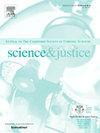UK National Fingerprint Collaborative Exercise 2022-23
IF 1.9
4区 医学
Q2 MEDICINE, LEGAL
引用次数: 0
Abstract
In 2022–2023 the Defence Science and Technology Laboratory (Dstl) designed and conducted a two-part fingerprint Collaborative Exercise (CE). The CE focussed on fingermarks contaminated in blood as they provide a complex scenario for forensic units and it involved both fingermark visualisation and comparison elements. Participants were requested to treat the exercise as a major crime submission following internal protocols and were invited to provide comments relating to how the marks were deposited (if appropriate). Overall, forensic units performed well within both parts of the exercise. The exercise highlighted the importance of conducting sequential fingermark visualisation techniques, utilising additional lighting techniques and maintaining detailed notes throughout the fingerprint examination process. The outputs from the CE provided opportunities for forensic units to learn from one another, raise the level of understanding of blood contaminated fingermarks and identify areas of improvement which can be incorporated into internal processes.
2022-23 年英国国家指纹协作计划
2022-2023 年,国防科学与技术实验室(Dstl)设计并开展了一次由两部分组成的指纹合作演练(CE)。这次演习的重点是被血液污染的指印,因为这些指印为法医单位提供了一个复杂的场景,演习涉及指印可视化和比对两个要素。参加者被要求按照内部规程将此次演习视为重大犯罪案件提交,并被邀请就指痕的沉积方式(如适当)提出意见。总体而言,法医单位在演练的两个部分都表现出色。这次演习强调了在整个指纹检验过程中采用顺序指印可视化技术、利用额外照明技术和保留详细记录的重要性。行政首长协调会的成果为法医单位提供了相互学习的机会,提高了对血液污染指痕的认识水平,并确定了可纳入内部流程的改进领域。
本文章由计算机程序翻译,如有差异,请以英文原文为准。
求助全文
约1分钟内获得全文
求助全文
来源期刊

Science & Justice
医学-病理学
CiteScore
4.20
自引率
15.80%
发文量
98
审稿时长
81 days
期刊介绍:
Science & Justice provides a forum to promote communication and publication of original articles, reviews and correspondence on subjects that spark debates within the Forensic Science Community and the criminal justice sector. The journal provides a medium whereby all aspects of applying science to legal proceedings can be debated and progressed. Science & Justice is published six times a year, and will be of interest primarily to practising forensic scientists and their colleagues in related fields. It is chiefly concerned with the publication of formal scientific papers, in keeping with its international learned status, but will not accept any article describing experimentation on animals which does not meet strict ethical standards.
Promote communication and informed debate within the Forensic Science Community and the criminal justice sector.
To promote the publication of learned and original research findings from all areas of the forensic sciences and by so doing to advance the profession.
To promote the publication of case based material by way of case reviews.
To promote the publication of conference proceedings which are of interest to the forensic science community.
To provide a medium whereby all aspects of applying science to legal proceedings can be debated and progressed.
To appeal to all those with an interest in the forensic sciences.
 求助内容:
求助内容: 应助结果提醒方式:
应助结果提醒方式:


